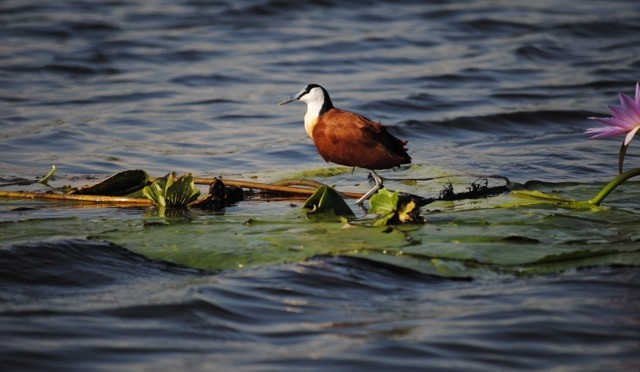This is the ninth and final installment in a series of nine posts covering our 13-day tour around Uganda with Mountain Gorilla Coffee Tours (“MGCT”).
Our next stop after Lake Mburo National Park was the Ssese Islands, a group of islands in Lake Victoria.1 We didn’t have any activities planned for the islands; it was just an opportunity to relax along the shore near the end of our tour.
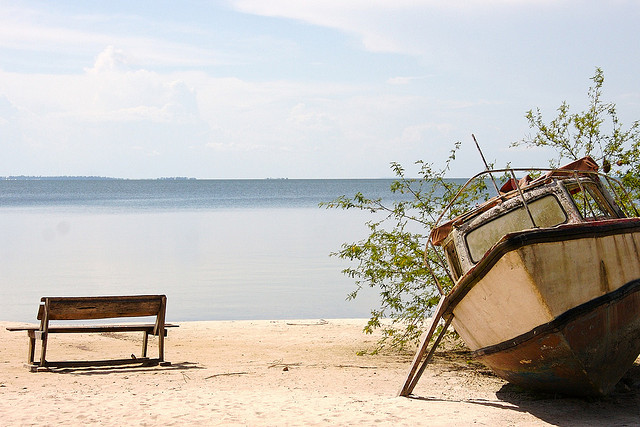
The distance from Lake Mburo to the Ssese Islands isn’t very great, but was a long, bumpy trip that was made even longer by the fact that our vehicle required servicing along the way. Our unplanned stop at the service station made us miss the morning ferry from the mainland to Bugala Island, the largest of the Ssese Islands. The departure time of the next ferry was somewhat ambiguous, and, after submitting to some security theater,2 we queued up and waited.
After about an hour, the ferry began loading vehicles. We climbed to the top level of passenger seating and enjoyed the view on the short ferry ride across Lake Victoria. Once we had disembarked on the other side, we headed for Kalangala, the largest town on the island.
Our companions decided to eat lunch at our hotel, but Marc and I went with Robert to a local restaurant. After lunch, we walked around a village by the edge of the water, where local fishermen lived with their families. We attracted an entourage of smiling children in various states of undress who just wanted to hold our hands as we walked along.
Later that afternoon, Robert drove us around the island for a better view of the sun setting over Lake Victoria.
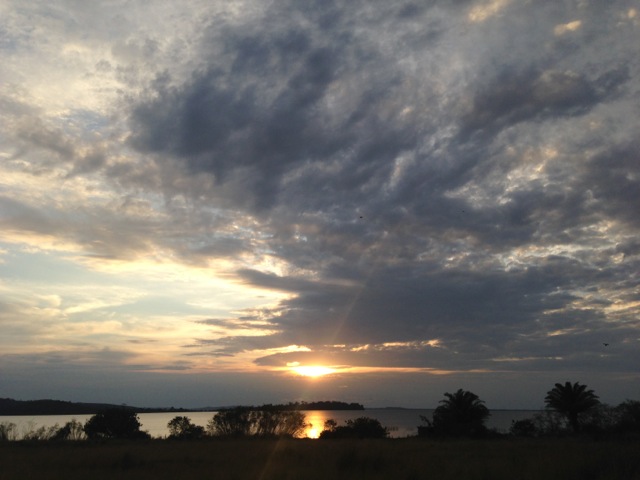
The next day was our final day of our Uganda tour with MGCT, and the plan was to head to Entebbe, where Uganda’s international airport is located. The ferry that runs between Kalangala and Entebbe is currently out of service, meaning that our vehicle would have to return to the mainland via the same ferry we had used to reach the island, and then drive to Entebbe from there – a long and circuitous journey along bumpy roads. Robert suggested that he take the vehicle on the road, and the rest of us sleep in and then take the smaller passenger ferry currently servicing the Kalangala-Entebbe route while the larger ferry is being serviced.
Because Robert needed to leave early in the morning to be in Entebbe in time to meet us when we got off the direct passenger ferry, the hotel drove us to the ferry. As I was getting into the hotel shuttle, one of the bellman told me Marc wanted to see me on the lawn. His exact words were: “He wants to show you an adventure!”
The adventure turned out to be a threatening-looking waterspout!
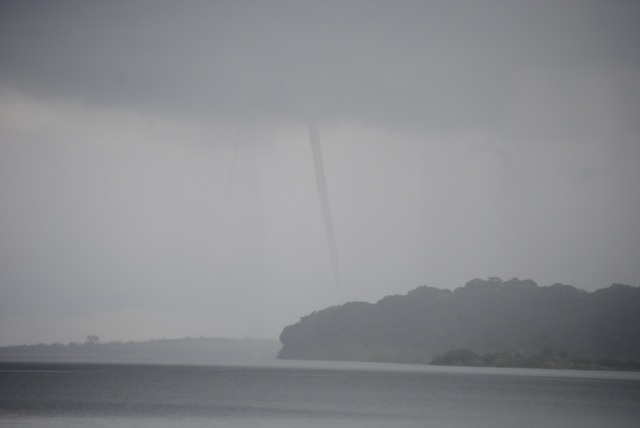
Although the waterspout was incredible, it didn’t seem like what you wanted to see right before boarding a ferry. Thankfully, the rain and the waterspout didn’t seem to have much impact on the sturdy passenger ferry. We eschewed the oversubscribed first class seats (which were, strangely, upholstered couches and loveseats) on the upper deck and found seats below on the larger second class deck.
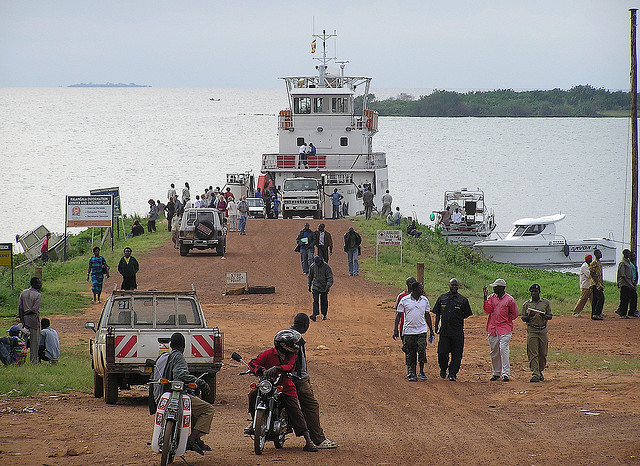
The ferry returned us to the Northern Hemisphere, crossing the Equator for the fourth and final time on our trip.
In Entebbe, we checked into our accommodation and grabbed lunch before heading off on our final excursion: a boat trip through the Mabamba Swamp Wetlands, where we hoped to spot the elusive shoebill.

We were riding in a low canoe, and would occasionally pass similar boats filled with local passengers or young fishermen paddling to work.
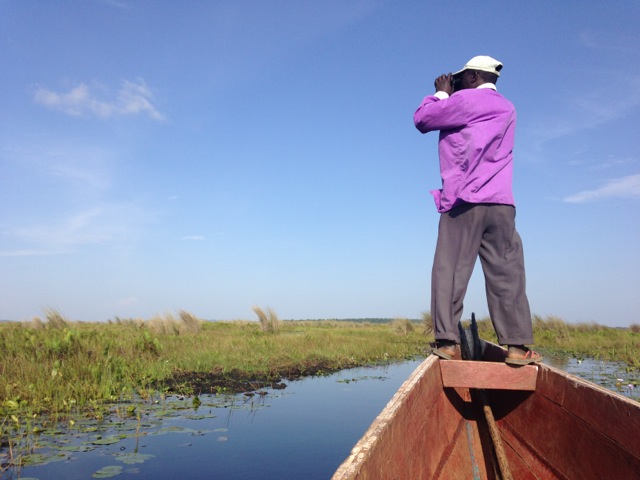
It seemed like our shoebill-spotting excursion was going to be a bust. We had spent a couple of hours boating around, squinting into the distance, with no success.
Even though we would have loved to see the shoebill, we still enjoyed the relaxing afternoon spent in the boat and had seen plenty of other interesting birds.


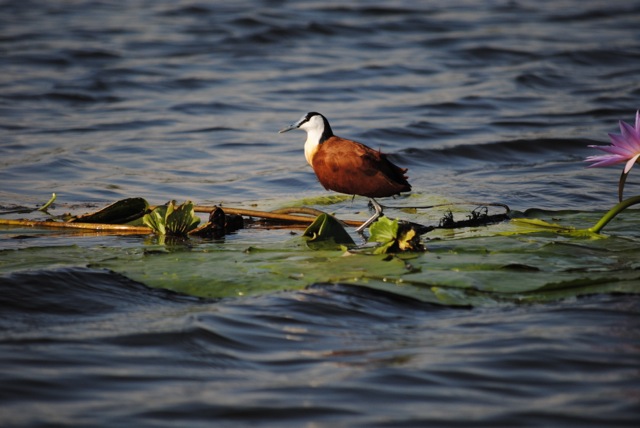
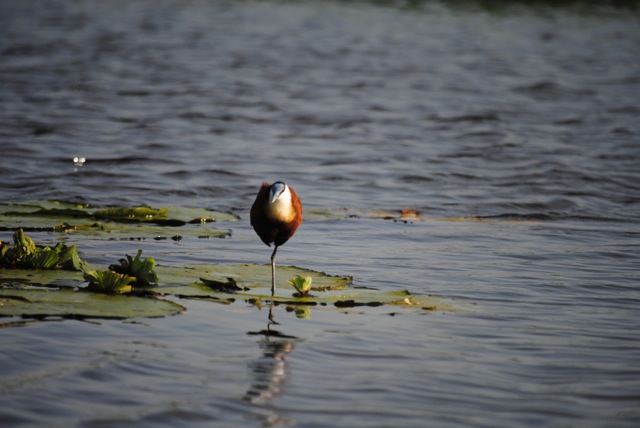
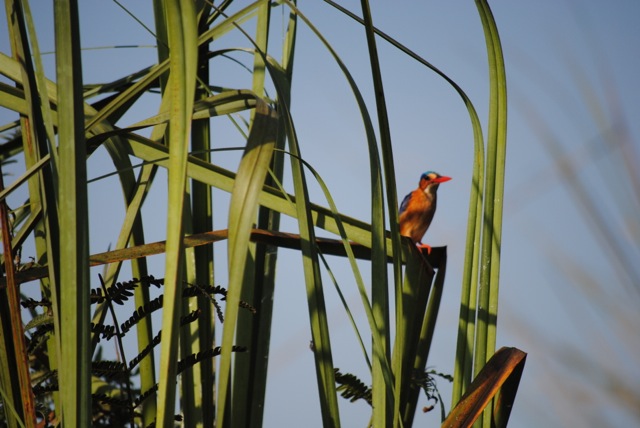
We turned off down one final channel as a last-ditch attempt before heading back, and … what’s that over there?
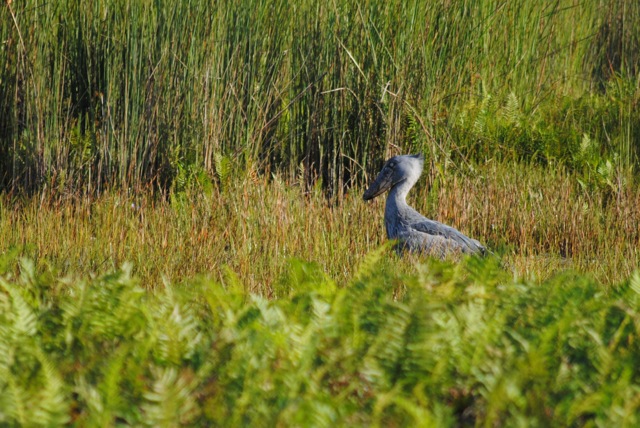
A shoebill! Even though we had known that it was a large bird, we couldn’t get over its size. We all stood up in our boat and shared binoculars as the prehistoric-looking bird3 ate a fish, changed locations, and finally flew away. We were in awe.
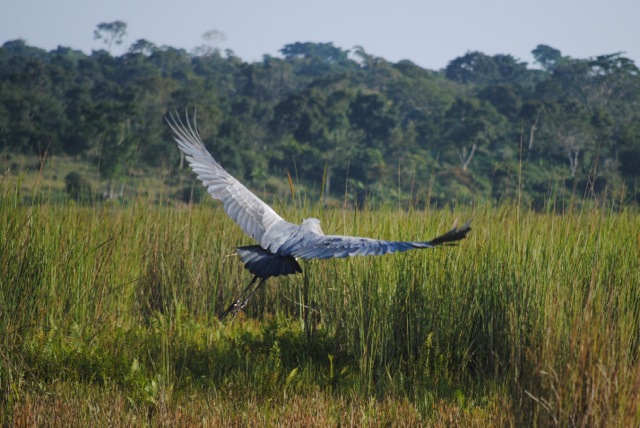
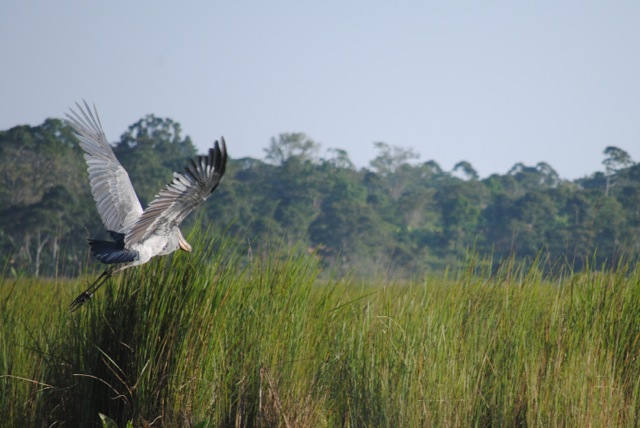
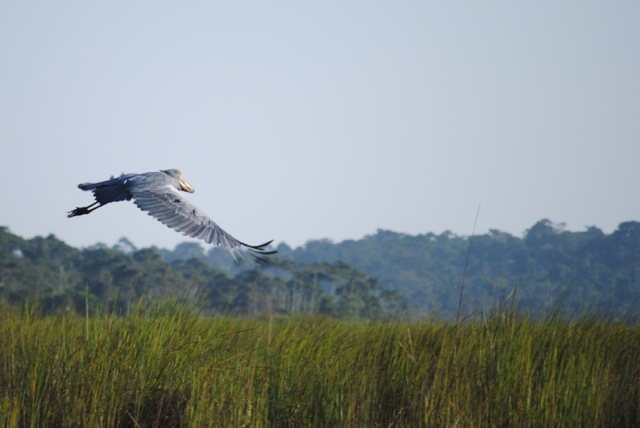
Our boat trip through the Mabamba Swamp Wetlands was the last activity of our tour, and it was a great note on which to end the trip.
We were flying out the following day, but not until late in the afternoon, so we had almost a full day to ourselves in Entebbe after the tour ended. After thirteen days of being almost constantly on the go, we decided to spend it relaxing.
Where We Stayed:
☆ Mirembe Resort, Kalangala. Two goats. The lakeside location was nice and the room was okay, but the constant loud music was annoying and the kitchen was slow (even by East Africa standards). Most irritatingly, my trekking shoes disappeared from our tour vehicle here.
☆ Victoria Lake View Guesthouse, Entebbe. Four goats. This guesthouse is so new that parts of it are still under construction. Our bed was comfortable and the complimentary wifi was fast. The best part, though, was the staff: everyone was very friendly (even if they didn’t speak perfect English, so some communications were a bit difficult) and accommodating. For example, we returned to the hotel after the kitchen had closed, but they made us dinner anyway, and they didn’t make us check out of our room until it was time to leave for our flight, even though it was late in the afternoon.
Where We Ate:
☆ Lotus, Entebbe. This was the first freestanding – not affiliated with a hotel – restaurant with any atmosphere we had seen since we left Kampala! We had our first lunch in Entebbe here, and, as Robert had taught us, we didn’t order off the menu and instead asked what local food was available. The local food (beans, matooke, rice, plus goat stew for Marc) was flavorful and plentiful. Our only complaint was that they only had one Krest bitter lemon soda in stock, so we had to share.
☆ Gately Inn, Entebbe. Marc and I took ourselves here for lunch our second day in Entebbe. Homemade veggie burger: that’s all I have to say to let you know how much I loved this place. Also: carrot juice and free wifi. That is all.
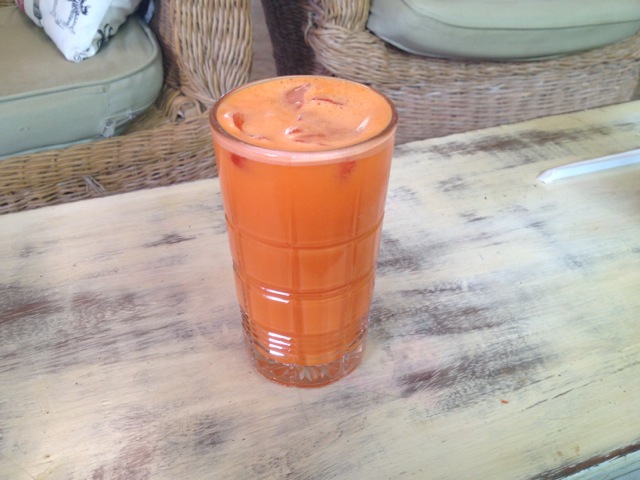
1 Loyal readers of this blog will remember that we have already seen this African Great Lake – the largest lake in Africa, and world’s second largest freshwater lake – while we were in Mwanza, Tanzania – and that we have already crossed it via ferry on our way to Rwanda.
2 After fumbling for several minutes through nearly all of the pages in Marc’s passport, a security guard proceeded to record his nationality as “California” in a handwritten logbook, which was amusing to us.
3 This is my favorite line from the Wikipedia page on shoebills: “Although it has a somewhat stork-like overall form and has previously been classified in the order Ciconiiformes, its true affiliations with other living birds is ambiguous.” (emphasis added)

